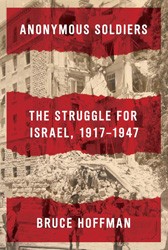A splendid critical celebration of Tel-Aviv’s first hundred years, this collection of essays reads like a spirited conversation across academic disciplines and across ideologies. While the primary focus is on the shaping of Tel-Aviv up until the founding of modern Israel in 1948, there is also a satisfying amount of attention paid to the changed conditions after 1967 and even into the twenty-first century. Most people are not aware of the fact that an independent municipality of Tel-Aviv existed during the British Mandate period. Like so much else in the Yishuv years, the Zionist enterprise was in the business of institution-building long before the declaration of statehood. The planning and nurturing of the first new Hebrew-speaking city was an important part of that agenda.
The book is neatly divided into three sections, “Historical Issues”; “Language, Literature, and Art,” and “Planning and Architecture.” Within each section, the topics are remarkably varied.
Among the issues most frequently explored is the relationship between the mythic or idealized Tel-Aviv and the actual city at different periods in its growth. Vitally connected to this concern is that of Tel-Aviv’s relationship to Jaffa. The attempted erasure of Arab identity in Jaffa during and after the war of independence, and the positioning of Tel-Aviv as Jaffa’s northern suburb, gave way in time to a perspective from which quickly-growing Tel-Aviv became the hub and forlorn Jaffa the exotic companion, as well as an emblem of the historical rootedness of the Israeli nation that Tel-Aviv could not be.
Equally engaging are the discussions of the gap between official plans for the new city and the actual outcomes, which are responsive to demographic flow, changing goals, and organic socio-economic processes.
Tightly-focused analyses, such as the one on “Balconies of Tel Aviv,” provide fresh perspectives for understanding this unique and fascinating city. Afterword, illustrations, index, notes on contributors.
Philip K. Jason is professor emeritus of English at the United States Naval Academy. A former editor of Poet Lore, he is the author or editor of twenty books, including Acts and Shadows: The Vietnam War in American Literary Culture and Don’t Wave Goodbye: The Children’s Flight from Nazi Persecution to American Freedom.





